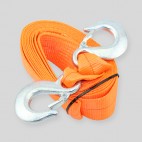The single connection point provides stability to these four lengths of chain and centers the weight of a load into a central point, which can help prevent swinging and uneven lifting. Given the design and construction of this 4-leg sling, it would logically follow that this was the most reliable and strong rigging on the market. After all aren’t four lengths of chain better than one, two, or three?In a number of circumstances, it is indeed the case that four lengths of chain are preferable over a single leg lifting chain or two-leg lifting chain, but not always.
Other types of slings still have important uses, and are sometimes the better choice for lifting a particular load. For example, a two-leg lifting chain is particularly adept at lifting rods, beams, or piping (anything that is substantially longer in length than it is in width.) Where and what are the best uses of a 4 leg lifting chain sling? Keep reading to find out!Where Are 4 Leg Slings Used?In many instances, the quadruple leg construction of these slings provides more stability than one, two, or three lengths of chain. In fact, a four leg sling is going to be more stable in the majority of situations. This makes it a perfect piece of equipment for use in a warehouse or shipping yard, where loads are likely to come in a square shape or be composed of varying weights. In this context, the added stability ensures that materials of this shape and variation can be lifted or lowered steadily and evenly.Another likely place to find a four leg sling put to good use is on a construction site. When utilized for construction purposes, the four legs provide stability in lifting concrete blocks or bundles of materials. However, as discussed earlier, many construction companies will switch to a two-leg or double sling while lifting oblong items, and a four leg sling is unlikely to be the only type of rigging you find on a construction site.What Circumstances Necessitate the Need for This Sling?There are several working conditions that can necessitate the use of a 4 leg lifting chain sling. One condition is the weight of the materials lifted. A three or four leg sling will have a higher rated capacity than a single or double sling. Although, it is important to realize that a three and four leg sling typically have the same weight restrictions, and the additional length of chain doesn’t increase the rated capacity.When switching to a four-leg sling for weight reasons, a user must still be incredibly conscious of the weight restrictions on each piece of equipment used.
Another important consideration is how much the weight capacity increases from previously used rigging setups. Carefully calculating the increase in weight capacity based on every individual component used in your rigging, including the master link that connects all four legs, is core to this consideration.Another consideration for using four legs of chain is for added stability. It is safest and most ideal when the weight of a load is evenly distributed on every leg of the sling.
https://www.ratchetstrapsfactory.com/product/lifting-belt/webbing-sling/
Other types of slings still have important uses, and are sometimes the better choice for lifting a particular load. For example, a two-leg lifting chain is particularly adept at lifting rods, beams, or piping (anything that is substantially longer in length than it is in width.) Where and what are the best uses of a 4 leg lifting chain sling? Keep reading to find out!Where Are 4 Leg Slings Used?In many instances, the quadruple leg construction of these slings provides more stability than one, two, or three lengths of chain. In fact, a four leg sling is going to be more stable in the majority of situations. This makes it a perfect piece of equipment for use in a warehouse or shipping yard, where loads are likely to come in a square shape or be composed of varying weights. In this context, the added stability ensures that materials of this shape and variation can be lifted or lowered steadily and evenly.Another likely place to find a four leg sling put to good use is on a construction site. When utilized for construction purposes, the four legs provide stability in lifting concrete blocks or bundles of materials. However, as discussed earlier, many construction companies will switch to a two-leg or double sling while lifting oblong items, and a four leg sling is unlikely to be the only type of rigging you find on a construction site.What Circumstances Necessitate the Need for This Sling?There are several working conditions that can necessitate the use of a 4 leg lifting chain sling. One condition is the weight of the materials lifted. A three or four leg sling will have a higher rated capacity than a single or double sling. Although, it is important to realize that a three and four leg sling typically have the same weight restrictions, and the additional length of chain doesn’t increase the rated capacity.When switching to a four-leg sling for weight reasons, a user must still be incredibly conscious of the weight restrictions on each piece of equipment used.
Another important consideration is how much the weight capacity increases from previously used rigging setups. Carefully calculating the increase in weight capacity based on every individual component used in your rigging, including the master link that connects all four legs, is core to this consideration.Another consideration for using four legs of chain is for added stability. It is safest and most ideal when the weight of a load is evenly distributed on every leg of the sling.
https://www.ratchetstrapsfactory.com/product/lifting-belt/webbing-sling/

コメント